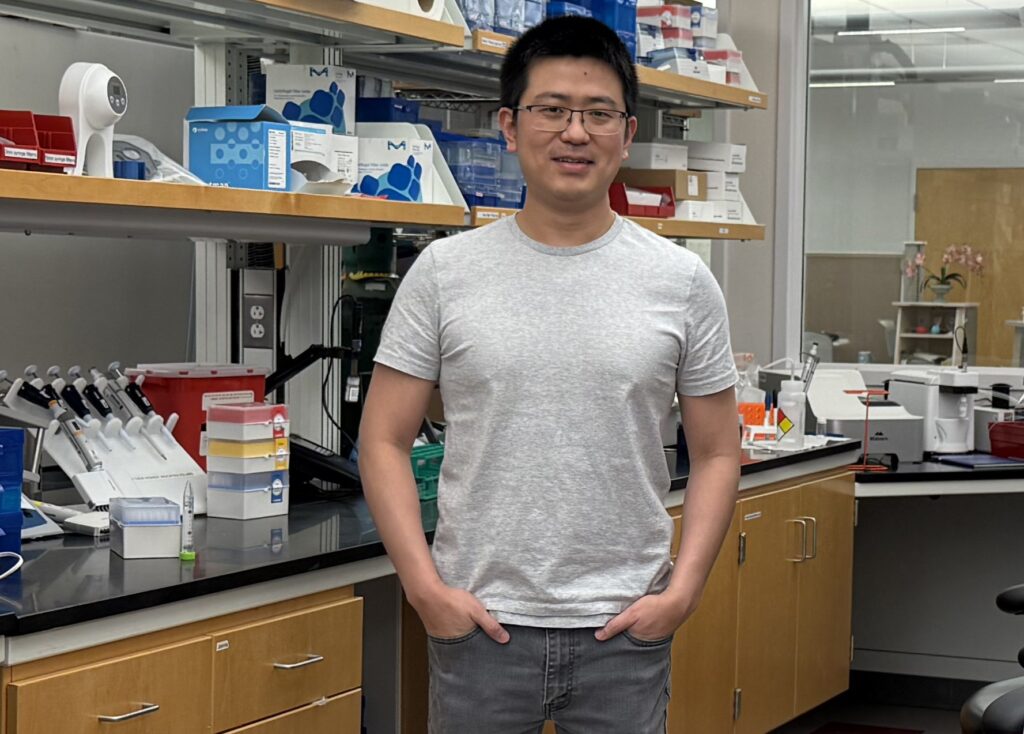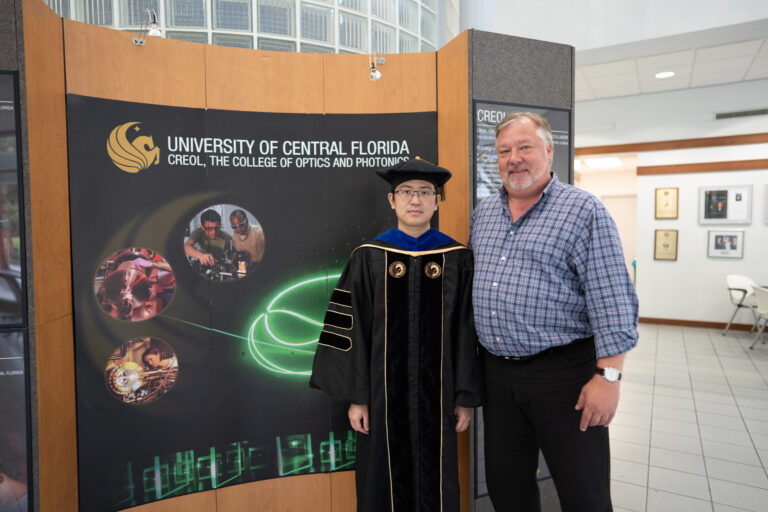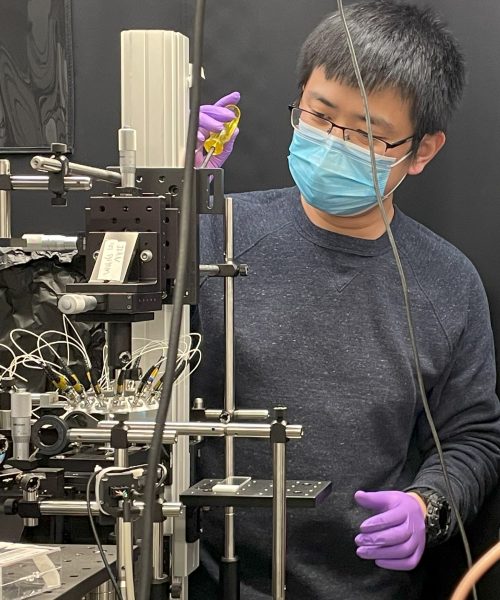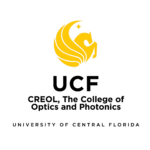CREOL Alum’s Biomedical Engineering Research Aims to Improve Treatment for Cancer and Neurodegenerative Diseases

It’s easy to see why Jian Zhao ‘14MS ’19 PhD is passionate about his research.
“This potentially could save tens of thousands of people’s lives,” he says.
Zhao is now an Assistant Professor at the University of Oklahoma’s Peggy and Charles Stephenson School of Biomedical Engineering. His mission is to develop a next-generation optical microscopic imaging system, with the goal of applying the technology to better understand how to prevent and treat cancer and neurodegenerative diseases.
“It’s a big problem in modern society, not just in the U.S. but also around the world every year,” Zhao says. “But we still don’t fully understand the disease mechanisms.”
Zhao believes the key to that understanding lies at the intersection of multiple cutting-edge disciplines: chemical engineering, fluorescence imaging, and computational imaging. By integrating those technologies into a standalone imaging platform, Zhao says his team can achieve higher imaging speed, better resolution, and high molecular specificity.
“My technology is able to image and analyze the disease at the molecular level, the single-cell level, so we are able to see, in some sense, what was hard to observe before with other technology,” Zhao says.
That understanding could enable researchers to develop therapeutics to target diseases faster and more effectively. Zhao’s vision isn’t just to develop a system that can save lives – but one that will also save untold fortunes of money that are spent each year on costly treatments. The inspiration behind this dream, he says, was sparked during his time as a PhD student.
“My time at CREOL laid a very strong foundation for everything I have accomplished today,” Zhao says. “If you want to build a very specialized optical microscopic imaging system, you need to have a laser, or LED, and you need to have all kinds of different optics that are assembled to a system. You also need to understand how to describe the optical physics that can form the image.”
Zhao’s journey underscores the rapidly expanding field of biophotonics, as CREOL researchers work to contribute further to the knowledge base.

A Strong Foundation
As a CREOL PhD student, Zhao’s research mostly focused on ultrafast lasers and fiber optics. He learned how to develop optical imaging systems and imaging processing algorithms. That knowledge, combined with his hands-on training in the lab, led to a new research direction.
“We found that our imaging fiber was able to transmit high-quality biological images,” Zhao says – referring to images of red blood cells or cancer tissue.
“Within a few months, [Zhao] became a leader and a maverick that creates his own path toward breakthroughs,” says CREOL Professor Axel Schülzgen, who supervised Zhao’s research. “Jian’s results were truly remarkable and went well beyond the state-of-the-art.”
Those results weren’t just a confidence boost. Zhao’s work lead him to continue his postdoctoral research at Boston University, which presented new opportunities to apply his optics and photonics expertise toward biomedical engineering research. He studied multiple types of imaging: chemical, fluorescence, and computational – collaborating with top experts in those areas. The experience also afforded him access to biological and medical experts who work directly on studying cancer and neurodegenerative diseases.
“Because CREOL gave me such comprehensive training for both hands-on and experimental skills, when I went to Boston, I felt so confident that I could switch to any integration in the optics and photonics area,” Zhao says.
After another postdoctoral stint at MIT, Zhao continued his career in Oklahoma. He has high expectations for the imaging technology being developed in his lab, especially when it comes to understanding diseases at the cellular level.
“We can track and analyze the metabolic process inside the cell so we will be able to investigate the mechanism underlying the cancer or neuron degeneration state,” Zhao says.

The Wide World of Biophotonics
Meanwhile, CREOL researchers are expanding their capacity for biophotonics research. In partnership with UCF’s College of Medicine, CREOL launched a joint biophotonics lab in fall 2024, which will provide opportunities for students from both colleges (as well as residents, fellows, and physicians) to conduct interdisciplinary research. One of the current imaging projects aims to improve the placement of epidurals during childbirth, using light and sound to deliver a tenfold resolution increase over ultrasound – and avoid the potentially serious consequences of misplacement.
Zhao’s work to better understand cancer and neurodegenerative disease cells highlights the broad applications CREOL alumni can apply their knowledge and skills to.
“It’s always very exciting and very interesting to explore new possibilities in developing, cutting-edge imaging technology,” Zhao says.
His continued success comes as no surprise to Schülzgen.
“Indeed, his postdoctoral research results, now exploring the field of biomedical imaging have proven that the promises he showed while at UCF bear fruits,” Schülzgen says. “Jian continues to excel and to publish in high-ranking research journals.”
“Schülzgen provided huge and invaluable support not just when I was at CREOL, but also after I left,” Zhao says. “He continuously helped me when I was in Boston, and even now.”
And thanks to his CREOL community of support, Zhao’s research is poised to support the medical community to make key advancements.
“I found that my technology will be quite useful,” he says.
You can read more about Jian Zhao and his current work here.
